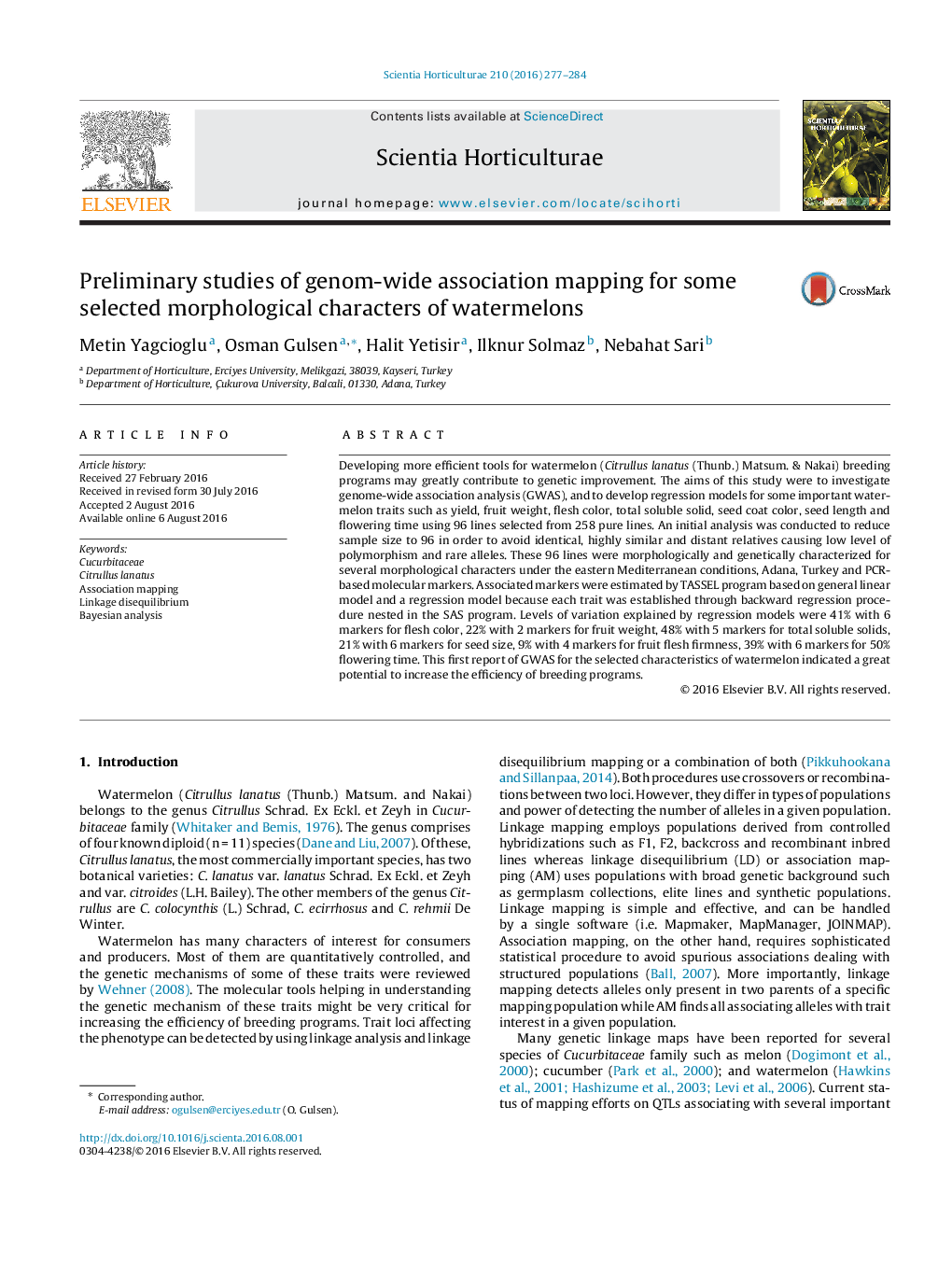| کد مقاله | کد نشریه | سال انتشار | مقاله انگلیسی | نسخه تمام متن |
|---|---|---|---|---|
| 4565939 | 1628788 | 2016 | 8 صفحه PDF | دانلود رایگان |
• Genome-wide association analysis was performed in watermelons.
• Selected 96 lines were subjected to morphological and molecular characterization.
• Markers explained 41% of flesh color and 48% of total soluble solids variations.
• This was the first report of marker-trait in germplasm collections of watermelons.
Developing more efficient tools for watermelon (Citrullus lanatus (Thunb.) Matsum. & Nakai) breeding programs may greatly contribute to genetic improvement. The aims of this study were to investigate genome-wide association analysis (GWAS), and to develop regression models for some important watermelon traits such as yield, fruit weight, flesh color, total soluble solid, seed coat color, seed length and flowering time using 96 lines selected from 258 pure lines. An initial analysis was conducted to reduce sample size to 96 in order to avoid identical, highly similar and distant relatives causing low level of polymorphism and rare alleles. These 96 lines were morphologically and genetically characterized for several morphological characters under the eastern Mediterranean conditions, Adana, Turkey and PCR-based molecular markers. Associated markers were estimated by TASSEL program based on general linear model and a regression model because each trait was established through backward regression procedure nested in the SAS program. Levels of variation explained by regression models were 41% with 6 markers for flesh color, 22% with 2 markers for fruit weight, 48% with 5 markers for total soluble solids, 21% with 6 markers for seed size, 9% with 4 markers for fruit flesh firmness, 39% with 6 markers for 50% flowering time. This first report of GWAS for the selected characteristics of watermelon indicated a great potential to increase the efficiency of breeding programs.
Journal: Scientia Horticulturae - Volume 210, 10 October 2016, Pages 277–284
